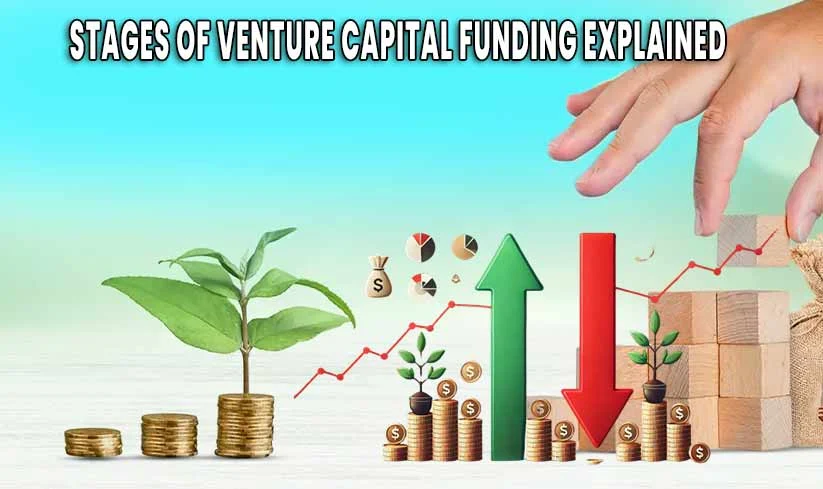Stages of Venture Capital Funding Explained
Venture capital (VC) funding is a critical financial lifeline for startups and high-growth companies. It provides the necessary capital to scale operations, develop products, and enter new markets. However, venture capital financing occurs in multiple stages, each serving a distinct purpose and catering to different business maturity levels.
Understanding these stages is crucial for entrepreneurs seeking investment, as well as investors looking to allocate capital effectively. This article breaks down the key stages of venture capital funding, their characteristics, and what startups should expect at each phase.
1. Pre-Seed Funding
What is Pre-Seed Funding?
Pre-seed funding is the earliest stage of financing, where entrepreneurs secure capital to transform an idea into a viable business. At this stage, startups are often in the conceptual or prototype phase and need funds for market research, product development, and initial team building.
Key Features:
- Investment Amount: Typically ranges from
- Investors: Founders, friends & family, angel investors, and early-stage accelerators.
- Purpose: Validating the business idea, building an MVP (Minimum Viable Product), and conducting initial market tests.
Challenges:
- High risk for investors due to unproven business models.
- Startups may struggle to attract institutional investors without traction.
Example:
A tech startup developing an AI-powered app may raise pre-seed funding to build a basic prototype and test user engagement.
2. Seed Funding
What is Seed Funding?
Seed funding is the first official equity financing stage, where startups raise capital to establish product-market fit and scale operations. Unlike pre-seed, seed funding involves more structured investments from venture capital firms, angel investors, and accelerators.
Key Features:
- Investment Amount: Usually between500,000 and 2 million.
- Investors: Angel investors, early-stage VC firms, and crowdfunding platforms.
- Purpose: Product development, hiring key talent, marketing, and initial customer acquisition.
Challenges:
- Startups must demonstrate traction (e.g., user growth, revenue, partnerships).
- Competition for seed funding is intense, requiring strong pitches and business plans.
Example:
A SaaS company raising seed funding to enhance its software, onboard early customers, and expand its sales team.
3. Series A Funding
What is Series A Funding?
Series A is the first major round of institutional venture capital financing. At this stage, startups have a working product, some revenue, and a clear growth strategy. The focus shifts from proving the concept to scaling the business.
Key Features:
Challenges:
- Investors expect a solid business model and a path to profitability.
- Startups must show strong metrics (e.g., customer retention, revenue growth).
Example:
An e-commerce startup raising Series A to expand into new regions, optimize logistics, and invest in digital marketing.
4. Series B Funding
What is Series B Funding?
Series B funding is for startups that have achieved product-market fit and need capital to grow aggressively. Companies at this stage are generating consistent revenue and are looking to dominate their market.
Key Features:
- Investment Amount: Between15 million and 50 million.
- Investors: Late-stage VC firms, private equity investors, and corporate VCs.
- Purpose: Market expansion, product diversification, acquisitions, and team scaling.
Challenges:
- Investors demand strong financial performance and competitive advantages.
- Startups must prove scalability and defend against competitors.
Example:
A fintech company raising Series B to launch new financial products, enter international markets, and acquire smaller competitors.
5. Series C Funding & Beyond
What is Series C Funding?
Series C and subsequent rounds (Series D, E, etc.) are for mature startups preparing for an IPO, acquisition, or further global expansion. Companies at this stage are market leaders with substantial revenue.
Key Features:
- Investment Amount: $50 million to hundreds of millions.
- Investors: Hedge funds, investment banks, private equity firms, and corporate investors.
- Purpose: Scaling globally, mergers & acquisitions (M&A), IPO preparation, and R&D for new innovations.
Challenges:
- High valuation expectations and intense due diligence.
- Pressure to deliver exponential growth and profitability.
Example:
A biotech firm raising Series C to fund clinical trials, expand manufacturing, and prepare for a public listing.
6. Mezzanine Financing & IPO
What is Mezzanine Financing?
Mezzanine financing is a hybrid of debt and equity used by late-stage companies before an IPO or acquisition. It provides capital without immediately diluting ownership.
Key Features:
- Investment Structure: Convertible debt or preferred equity.
- Purpose: Bridging the gap between private funding and going public.
Initial Public Offering (IPO)
An IPO marks the transition from a private to a publicly traded company. It allows early investors to exit and provides liquidity while raising substantial capital.
Challenges:
- Regulatory complexities and high costs.
- Market conditions heavily influence IPO success.
Example:
A tech unicorn going public to raise $1 billion and allow early investors to cash out.
Conclusion
Venture capital funding progresses through distinct stages, each with unique objectives, investor expectations, and challenges. From pre-seed to IPO, startups must strategically navigate these phases to secure the right funding at the right time.
For entrepreneurs, understanding these stages helps in preparing compelling pitches, setting realistic milestones, and attracting the right investors. For investors, recognizing where a startup stands in its funding journey allows for better risk assessment and investment decisions. Whether you're a founder seeking capital or an investor evaluating opportunities, mastering the stages of venture capital funding is essential for long-term success in the high-stakes world of startups.








